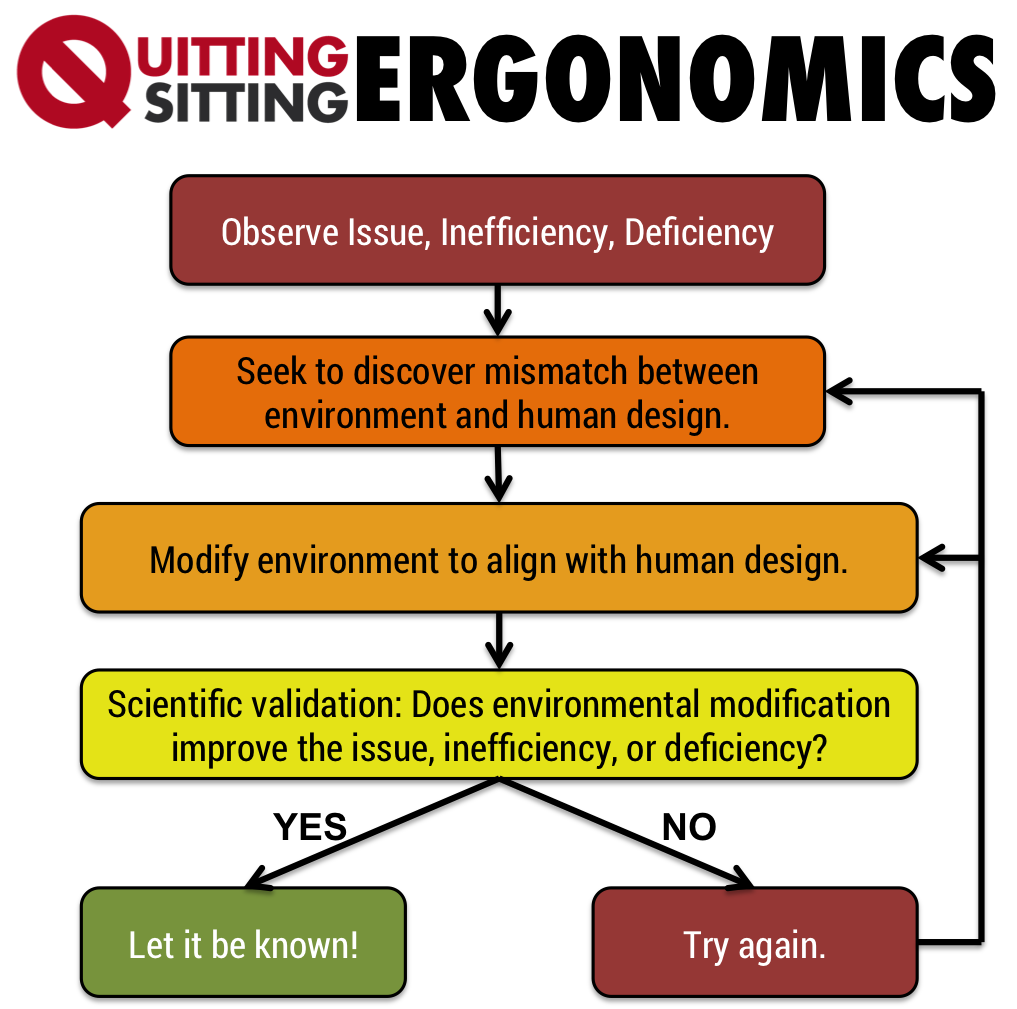
Pictured: Ergonomics (no expensive chairs included).
We’re on a mission to bring ergonomics back to its roots. Here’s why and how.
We’ll make you a bet. When we say ergonomics, you think of some sort of expensive chair – and not super awesome mountain biking.
Were we right? We should have bet an anti-fatigue mat on it.
People have made some great chairs, sure. But we take issue with the fact that the public sphere thinks of ergonomics as expensive chairs and funky keyboards. We’re here today to fix that.
And we’re going to start with the basic etymology:
Ergonomics
From greek ἔργον, meaning “work”, and νόμος, meaning “natural laws”
So ergonomics, at its literal roots, means working according to natural laws. And we’re all about that, so long as we think about work and natural laws the right way.
What does “work” mean in the context of ergonomics?
The reason you picture bizarre office equipment is because work has been reduced in our culture to “stuff that happens in or near a cubicle.” See, the workplace has gotten its time in the spotlight because there is big corporate money to be had in improving worker efficiency and decreasing employer healthcare costs. But most of us aren’t Fortune 500 CEOs. And we spend most of our lives outside work. (Even if it doesn’t always feel that way).
Ergonomics has to go beyond workplace efficiency. It has to include everything else that goes into just plain feeling awesome all the time.
And although those piles of corporate studies focus on ergonomics as a means to increase office work output – and that is valuable – the spotlight needs to expand to other things you care about.
Things like your joints not aching. Things like not feeling so darn tired when the alarm clock rings. Things like realizing that health is more than just the absence of disease. Things like feeling better at 45 then you did at 25.
That’s why ergonomics has to go beyond workplace efficiency. It has to include weekend warrior efficiency, playing with your kids efficiency, restful sleep efficiency, 100-yard sprint efficiency, and everything else that goes into just plain feeling awesome all the time.
Ergonomics has to include EVERYTHING you can optimize by “working” according to natural laws.
Because work isn’t just what you want to get done in the office. Work happens every time you expend energy in the pursuit of a goal – even if it’s just the work of laying down to take a nap.
How do we identify natural laws?
The natural world is a big, confusing place – and though human knowledge is expanding at an unprecedented rate – there’s still a lot we don’t understand. Fortunately, we’ve been gifted a great tool for our approach: the history of humans in their natural environment.
Our pursuit of natural laws to improve our “work” starts there. Whenever we notice a deficiency, inefficiency, or issue – we should first turn to our knowledge of mankind’s natural environment for a cause and solution.
Here’s a short example. In the modern first world, we have a near-epidemic of poor sleep. Following our method of discovery, we first ask “Is there any modern discordance with our design that could be causing this?” Sure enough, we humans have a circadian rhythm that is strongly influenced by the quality and quantity of light we are exposed to through the course of the day. And we’ve only been using electric lighting after sunset for the last ~200 years (a tiny fraction of our time on Earth).
Observing this discord, we were able to hypothesize that electric light after sunset hurts sleep. Then we turned to science to test that hypothesis, and an enormous body of research has confirmed it. Our natural environment is a great starting point for identifying natural laws, but the scientific method finishes the job.
Ergonomics = Work + Natural Laws
Let’s bring it home. Work includes everything we humans expend energy to do. Natural laws are the result of the environment we evolved in. Here’s our definition of ergonomics:
Ergonomics
noun | The science of improving human efficiency, health, and performance by designing environments in accordance with natural laws.
And that’s what we’re constantly focused on. We use this awesome flowchart to help:




















